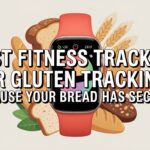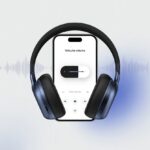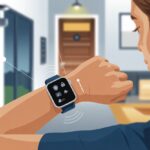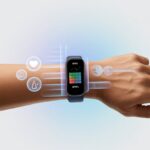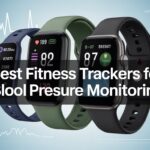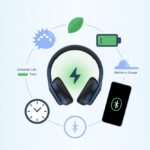Who would’ve guessed our wrists could double as gluten trackers instead of just quietly judging our step count? With a smartwatch, we can actually spot the signals our bodies send when we get “glutened”—just by keeping tabs on heart rate, sleep, and stress. It’s like a tiny health detective that doesn’t roll its eyes at us like some doctors do.
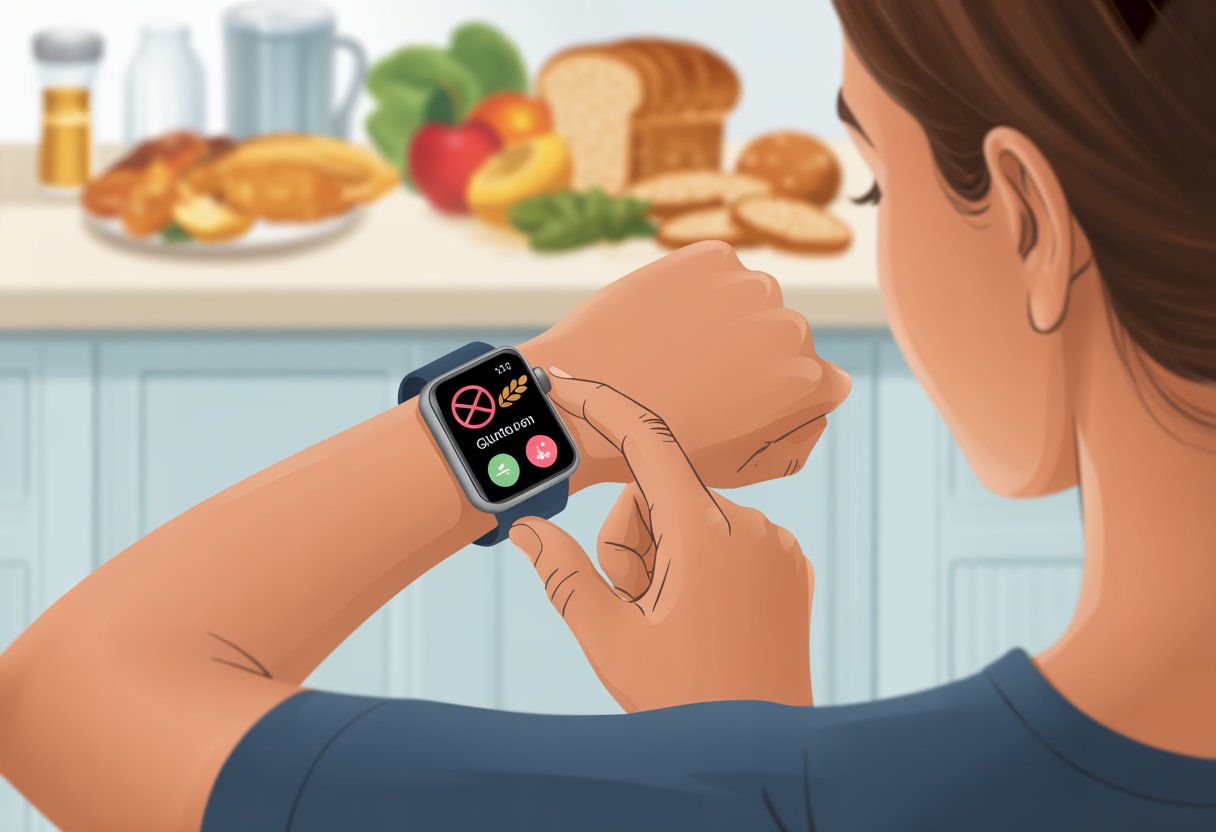
Most smartwatches can’t sniff out gluten (no “was that pizza safe?” button yet), but they can drop hints. When our heart rate jumps, sleep tanks, or weird patterns pop up after a sketchy meal, these gadgets help us piece things together—usually quicker than blaming the dog for our stomach issues.
Honestly, half the struggle is just remembering what we ate and how we felt after. Using built-in features and a few handy apps, we can make gluten sensitivity a little less dramatic and maybe avoid disasters next time. If you’re curious about using your watch for more than just ignoring texts at dinner, stick around!
What Is Gluten Tracking with a Smartwatch?
Dodging gluten sometimes feels like a game of “the floor is lava.” With smartwatches and other wearables, we’ve got new tools to notice how our bodies react to gluten and manage celiac disease or gluten sensitivity.
Understanding Gluten and Its Impact
Gluten is a protein found in wheat, barley, and rye. Most people don’t think twice about it. For those of us with celiac or gluten sensitivity, though, it’s the villain—causing stomach aches, headaches, rashes, and other “why me?” moments.
If we eat gluten by mistake, our bodies sound the alarm. Bloating, joint pain, brain fog—these can all show up. We might even spot changes in weight, energy, or see odd numbers on our smartwatches, like lower heart rate variability.
Gluten sneaks into our lives in the most ridiculous ways—cross-contaminated chips, or those “gluten-free” cookies from Aunt Linda (she tries). Paying attention to our bodies matters, and a smartwatch might actually beat the food diary we keep forgetting to update.
Why Track Gluten Using Wearable Devices
When we use a smartwatch or wearable, we can catch changes after gluten sneaks in—sometimes before we even realize it. Smartwatches track heart rate, sleep patterns, and activity. Some people notice lower HRV or other odd patterns after gluten exposure, which helps us figure things out faster.
Here’s why smartwatches are handy for gluten tracking:
- Continuous Monitoring: We let the tech do the work—no more scribbling notes.
- Early Warning Signs: Sudden changes in sleep, heart rate, or steps can tip us off.
- Gluten Sensors: Certain devices (and special gluten sensors) can team up with our wearables to give us more info about food, instead of playing ingredient roulette.
- Easy Access: All the data sits right on our wrist, so we don’t have to dig through old notebooks or guess what caused the drama.
Basically, we’re using our gadgets to become gluten detectives—no cape required, unless you want one.
Getting Started: Preparing Your Smartwatch for Gluten Tracking
To track gluten with a smartwatch, we need the right apps, a good health platform, and devices that actually talk to each other. Skipping a step here is like baking gluten-free cookies and forgetting the sugar—nobody’s happy.
Setting Up Mobile Apps for Gluten Tracking
We start with decent mobile apps for gluten tracking. Some focus on food logging, celiac support, or just tracking what we eat. These let us scan barcodes, search gluten-free products, and save our go-to safe foods.
After picking an app, we download it and set up an account. Please, not “Fluffy123” as the password. Look for apps with reminders so we don’t forget to log meals. Yes, that gluten-free donut counts.
Once we’re set up, these apps usually sync with our smartwatch. That means we can log foods or get reminders straight from our wrist—pretty handy when our hands are full of groceries and existential dread from reading food labels.
Pairing with Health Monitoring Platforms
Gluten tracking works best when we link it to bigger health platforms like Apple Health or Google Fit. Instead of bouncing between a million apps, we get all our data in one spot—like a gluten-free buffet, but for info.
We connect our smartwatch and app accounts in the settings. Turning on syncing lets us see not just meals, but heart rate and activity, too. Some of us even spot trends, like changes in heart rate variability on “glutened” days.
Not exactly a superpower, but hey, it’s pretty close.
Ensuring Compatibility with Dietary Tracking Features
Not every smartwatch or app gets gluten details right. We need to check if our device supports food tracking and notifications. Some wearables just count steps or nag us to stand—not super helpful for gluten.
Before buying or downloading anything, it helps to peek at product pages or reviews. Most smartwatches and apps list things like gluten detection or barcode scanning up front. If not, we might need to get creative—or switch brands.
A quick table can help us compare:
| Device | App Support | Dietary Tracking |
|---|---|---|
| Apple Watch | High | Built-In & 3rd-Party |
| Fitbit | Moderate | 3rd Party Apps Only |
| Cheap No-Name | Low | Rare/Manual Entry |
Picking tech that actually works together saves time and headaches. It lets us focus on finding snacks that aren’t full of gluten or regret.
Logging Gluten Intake and Tracking Symptoms
If we want to use a smartwatch for gluten tracking, we have to log what we eat and how we feel. That means learning how to record meals, spot gluten, and keep tabs on our health—so we don’t end up feeling like a flat tire at random.
How to Record Dietary Choices on Your Fitness Tracker
We don’t have a personal chef with a clipboard, but our fitness tracker does a decent job. Most smartwatches have food diary apps that let us log meals—some, like MyFitnessPal, even scan barcodes.
We just tap in meals and snacks, trying to be honest about what’s on our plate. Was that bread actually gluten-free, or did we just hope for the best? If we want real insight, accuracy matters here.
Fitness trackers can also track calories, carbs, and sometimes mark foods as gluten-free—with the right app. If we add the brand and portion size, future-us will thank us when we’re hunting for patterns.
Identifying Gluten-Free and Gluten-Containing Foods
Gluten hides better than missing socks. But our smartwatch and the right apps can help. Apps like Fig let us scan barcodes for allergens and check ingredients. We can set alerts for sneaky stuff like wheat or barley.
A quick cheat sheet:
- Gluten-free grains: rice, quinoa, corn, buckwheat
- Gluten grains: wheat, barley, rye, triticale
- Possible sources: sauces, soups, processed snacks
When shopping, we scan or check lists on our device—less confusion, more confidence. If we’re unsure, we snap a photo or leave a note for later.
Tracking Physical and Mental Health Responses
Nothing says “gluten accident” like a day glued to the bathroom or feeling off for no reason. Logging symptoms helps. We jot down physical stuff—bloating, headaches, stomach pain—right on our watch. Some apps like mySymptoms even let us match symptoms to meals.
But gluten messes with our mood, too. We can tag entries with things like “low energy” or “brain fog.” Syncing data regularly makes it simple to share with a doctor, so we’re not left guessing.
Tracking both body and mind means we don’t forget gluten can mess up more than just our stomach.
Analyzing Health Data and Identifying Correlations
Tracking gluten with a smartwatch isn’t just about numbers—it’s about connecting the dots. By watching our heart rate, glucose, and mood, we can see how our choices show up in real life.
Monitoring Heart Rate and Glucose Readings
Smartwatches are great at tracking heart rate. After eating gluten, some of us notice our hearts start to race. By comparing our usual heart rate to post-meal numbers, we might spot weird spikes.
Some smartwatches sync with continuous glucose monitors. If we’ve got both, we get extra data. Comparing glucose readings to our meal logs sometimes reveals if gluten is the culprit behind blood sugar swings.
A simple table for meal times, ingredients, heart rate, and glucose helps us spot patterns—no spreadsheet wizardry needed. The point isn’t to stress, just to notice changes.
Mood Tracking After Dietary Changes
Gluten isn’t just about stomach aches—moods shift, too. Tiredness, crankiness, or brain fog can hit after eating the wrong thing.
Most smartwatches work with mood tracking apps. We can jot down notes after meals, like “felt awesome” or “turned into a grump.” Over time, we’ll see if our mood takes a nosedive after certain foods.
Some apps let us tag moods with emojis, which is way more fun than typing “irritable” every other day. Linking mood to meals helps us decide what’s worth eating. Sorry, gluten pizza—maybe next time.
Spotting Patterns Between Gluten and Symptoms
Time for detective work—spotting patterns. We compare heart rate, glucose, and mood to figure out what happens after gluten.
A basic checklist helps:
- Meal
- Time
- Ingredients (especially gluten suspects)
- Heart rate before/after
- Mood
If symptoms pop up, we play antibody sleuth. We can’t measure antibodies with a watch (yet!), but we can look for clues—like feeling sick or tired after certain foods.
Putting it all together makes doctor visits way easier. And honestly, showing up with organized smartwatch data might just impress our doctor more than our ability to pronounce “gliadin.”
Maximizing the Benefits of Gluten Tracking
Let’s be honest—sticking to a gluten-free diet isn’t easy, and sometimes our willpower feels about as sturdy as a wet noodle. Smartwatches can actually give us a boost, helping us keep those gluten-avoiding dreams alive. Plus, they make all those endless food label checks feel a bit more worthwhile.
Staying Consistent with Your Gluten-Free Diet
If you deal with celiac disease or gluten sensitivity, even small slip-ups can ruin your day. Setting reminders and meal alerts on your smartwatch might just stop you from grabbing that suspicious snack at midnight.
You can log meals with notes like, “Was that mystery sauce gluten-free?” or, “Never trust Aunt Linda’s cookies again.” With smartwatch apps, you can track symptoms after meals. This helps you spot which foods trigger problems and avoid them next time.
Parents can set smartwatch alerts to check their kids’ snacks and lunches. That way, they won’t accidentally trade their gluten-free granola for regular crackers. Hydration and exercise reminders deserve a mention too. Staying hydrated and moving around really helps your body recover if gluten sneaks in.
Using Data Insights for Long-Term Health Improvement
All those little data points add up over time. When you look back at trends—like when symptoms pop up or which days you exercise more—you might start connecting the dots between your diet and how you actually feel.
Most smartwatches let you export health reports. You can share these with your doctor, giving them more than just a vague “I feel weird sometimes.” If you pick up a new gluten-detecting device, tracking your gluten intake gets even easier. Portable gluten testers fit right in your bag for extra peace of mind.
You can also track sleep, stress, and activity with a smartwatch. This makes it easier to see if a “bad gluten day” matches up with a “tossed-and-turned-all-night” kind of night. With all this info, you can make smarter choices—no more guessing and hoping for the best.
Bonus: Extra Features and Perks for the Savvy Tracker
Who doesn’t love getting a little more out of their gadgets? Beyond gluten tracking, smartwatches offer sneaky savings and smart health tools that make gluten-free living easier—and honestly, a bit more fun.
Exploring Discounts and App Upgrades
Would you have guessed that gluten tracking could actually save you money? Some mobile apps hand out exclusive discounts if you use their premium features through your fitness tracker or smartwatch.
Upgrading usually means perks like:
- Coupons for gluten-free products
- Free trial months for gluten recipe apps
- Early access to app updates
- Bundle deals with other health apps
Your smartwatch might even buzz with alerts about gluten-free restaurants nearby. It’s kind of like having a tiny, gluten-sensitive concierge on your wrist.
Here’s a quick table showing what some upgrades might offer:
| App Feature | Free Version | Premium Upgrade |
|---|---|---|
| Discount Alerts | ❌ | ✔️ |
| Restaurant Finder | ❌ | ✔️ |
| Barcode Scanner | ✔️ | ✔️ |
| Food Log Export | ❌ | ✔️ |
It looks like you didn’t include a text passage for me to edit. Please provide the text you’d like me to work on, and I’ll be happy to help!
Integrating Exercise Metrics with Gluten Tracking
Why let gluten tracking hog the spotlight while our steps and heart rate just hang out in the background? Honestly, it seems a little unfair. Lots of fitness trackers actually let us mix exercise data with our gluten logs, so we can finally see if that morning jog makes our symptoms chill out.
Ever notice your stomach feels a bit better after a quick walk? You can log that. Some apps even nudge us to move if our logs start looking a bit “gluten risky” (honestly, thanks for the sass, smartwatch).
When we track everything together, our doctors might spot patterns we’d totally miss:
- Heart Rate Spikes: Maybe these happen after a gluten slip-up
- Energy Levels: Logged before and after meals
- Daily Exercise: Tied to how our gut actually feels
Suddenly, our tracker isn’t just a step-counter. It’s more like a gluten-fighting, data-loving sidekick.
- Why do my Bluetooth headphones keep resetting? Solving the Mystery of Rebooting Ears - January 5, 2026
- Is WHOOP Worth It for Runners, Cyclists, and Weightlifters or Just Another Expensive Wrist Buddy? - January 5, 2026
- Best Fitness Trackers Under $200 That Won’t Make Your Wallet Sweat - January 4, 2026

